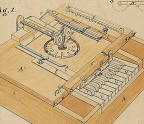Off the Rails


On weekdays in the 1910s, the waiting room at the Indianapolis Traction Terminal welcomed hundreds of travelers—men wearing straw boaters or derbies, women in wide-brimmed hats and ankle-length skirts—debarking from or waiting to board trains to and from South Bend and Terre Haute, Indiana, Columbus, Ohio, and elsewhere. At the adjoining train shed, 500 trains, operated by 12 interurban railway lines, came and went daily, carrying some seven million passengers a year. Indianapolis Traction was the nation’s largest interurban terminal. By 1941, the trains were gone. The building became a bus terminal, was shuttered in 1968, and in 1972 was torn down—a capsule history of American interurban electric rail. The site of the interurban terminal, demolished in 1972, now is the location of the Hilton Indianapolis.
“Interurban” means “between cities,” but as a means of transit the definition is looser. Interurbans were hybrids of the city streetcar line and the suburban commuter railroad as those transportation modes existed before the automobile. Streetcars mostly stayed within a city’s limits, but interurbans lived up literally to their Latinate name, connecting municipalities and bringing mass transit to small-town and rural America. Like a streetcar, an interurban usually got power supplied by overhead electric wires fed by a coal- or oil-fired power plant. The wires propelled one- or two-car trains.
Electric traction—transport systems, tracked and not, that run on electricity—made possible both the interurban and the streetcar, which replaced railcars drawn by horses and sometimes by cable. As early as the 1830s, inventors were using batteries to power railcars, but those systems were slow and ran only short distances. In the early 1880s, Baltimorean Leo Daft introduced a more reliable and effective system powered by overhead wire. In 1888 former naval officer Frank Sprague, of Richmond, Virginia, pioneered improvements, such as a non-sparking electric motor mounted on the car’s underside and powered by a spring-laden pole, or trolley, connecting to an overhead wire by means of a rotating wheel. Within a year of Richmond installing trolleys, more than 100 cities were developing
You’re reading a preview, subscribe to read more.
Start your free 30 days



